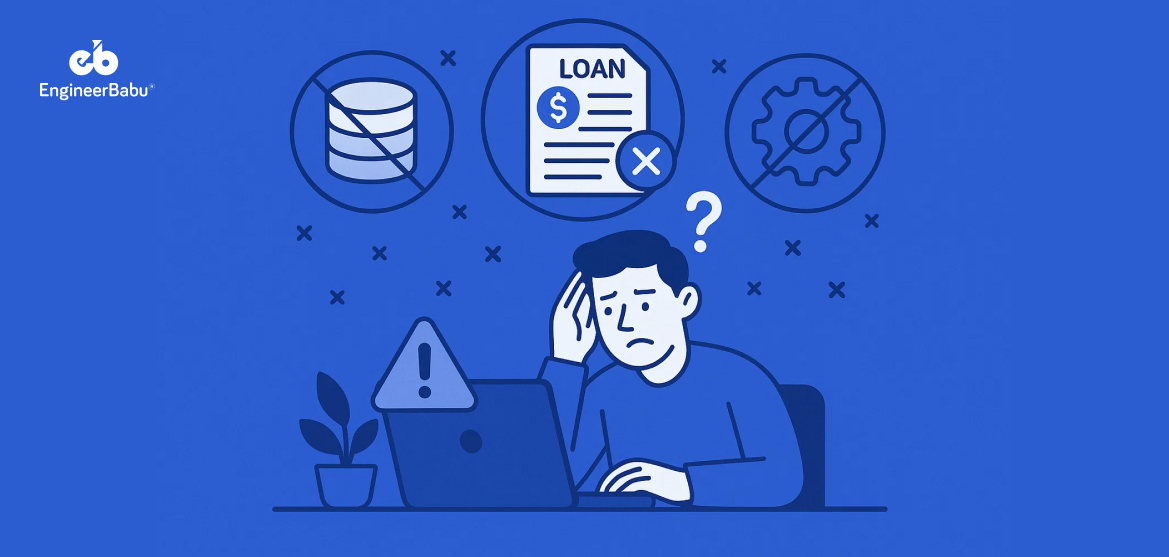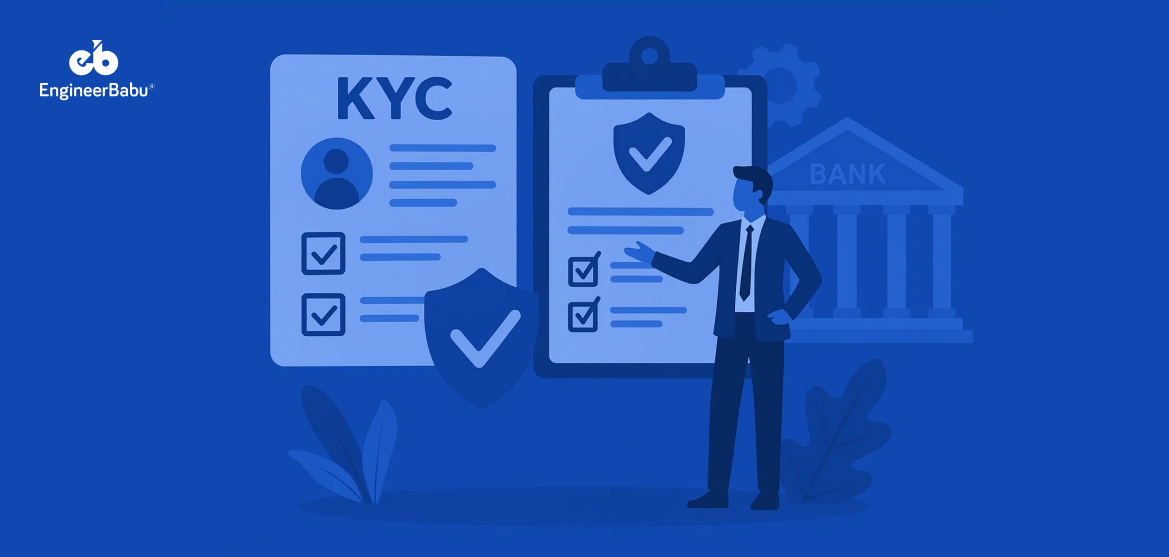Lending today is no longer paper-heavy or office-bound. Customers expect faster approvals, digital applications, smooth EMI journeys, and complete transparency at every stage. This shift has pushed lenders to rethink how they manage the entire loan lifecycle.
That is where the idea of a loan management system becomes important. It gives lenders a single platform to handle everything from application to underwriting, disbursement, collections, and compliance. It also helps reduce manual work, track performance in real time, and deliver a better customer experience.
The rise of digital lending shows how big this shift has become. The global digital lending market is expected to reach 44.49 billion dollars by 2030, according to Grand View Research. This growth is driven by lenders adopting technology that helps them process loans faster and with fewer errors.
Therefore, understanding what a loan management system does and how it improves operations is the first step for any lender that wants to stay competitive.
What Is a Loan Management System?
A loan management system is a software platform that helps lenders manage the complete loan lifecycle in one place. It handles customer applications, verifies documents, checks credit data, supports underwriting decisions, schedules repayments, and tracks EMIs with accuracy.
The system creates a smooth workflow so teams do not rely on spreadsheets or multiple tools. When a customer applies, the platform collects their information, runs identity checks, and passes the file to underwriting.
After approval, it manages disbursement, repayment reminders, and payment tracking. If a borrower delays an instalment, the system alerts the collections team and helps them take the next action.
There are various types of loan management systems. Two of the most crucial ones are –
- Off-the-shelf tools that offer standard workflows and
- Custom-built systems that match the exact lending model, product rules, and compliance needs of a business.
Modern platforms also integrate with payment gateways, eKYC tools, credit bureaus, and accounting systems to reduce manual work and improve accuracy. The goal is to help lenders work faster, stay compliant, and give borrowers a smooth and transparent experience.
Core Components of a Loan Management System
Every lender follows a similar flow, but the strength of the process depends on how well each stage is managed. These core components help explain what is a loan management system and how it improves accuracy, compliance, and customer experience from start to finish.
-
Loan Origination
Loan origination is where the borrower’s journey begins. The system collects applications, verifies identity details, checks credit information, and organises all files in a structured format. This gives lenders a complete picture before underwriting begins and reduces the back and forth that usually slows traditional lending teams.
-
Underwriting Engine
Underwriting uses rules and scoring models to decide whether an application qualifies for approval. A strong engine evaluates income, bank statements, risk profiles, and repayment capacity. It removes guesswork and reduces human error, helping lenders maintain consistent decision-making even when they handle large volumes of applications.
-
Loan Servicing
Once the loan is approved, servicing ensures the customer journey stays smooth. The system manages disbursement, creates EMI schedules, sends reminders, and records each repayment. It also keeps track of part payments or rescheduled EMIs, so lenders always have a clear view of outstanding amounts and customer behaviour.
-
Collections Workflow
Collections are not just about chasing overdue payments. A good system segments customers based on delay patterns, risk levels, and repayment history. It helps teams plan soft reminders, follow-up actions, and recovery steps with accuracy. This structured process prevents revenue leakage and improves overall collection efficiency.
-
Reporting and Compliance
Reporting gives lenders real time visibility into loan performance. The system creates audit trails, generates regulatory reports, and highlights early signs of risk. This helps leadership teams stay compliant with industry guidelines and make timely decisions. It also keeps data organised so audits and inspections run smoothly.
Key Features of a Modern Loan Management System
Modern lenders need systems that are fast, secure, and accurate. A well-designed loan management software development process includes each of these features that automate every lending activity and reduce dependency on manual work.
1. Automated Loan Origination
The system creates a smooth start for the borrower by collecting applications, validating data, and organising documents without manual effort. Automated screening ensures underwriting receives complete and clean inputs. This reduces delays and avoids situations where borrowers must resubmit information multiple times.
2. Digital KYC and Verification
Digital KYC helps teams complete identity checks in a few seconds instead of days. The platform connects with verification partners to validate PAN, Aadhaar, bank details, and supporting documents. This creates a secure and compliant onboarding process while reducing manual examination of identity files.
3. Real Time Credit Assessment
The system pulls credit bureau data instantly and runs scoring rules to determine eligibility. Lenders can set risk thresholds, minimum credit scores, and income rules. By automating these checks, lenders remove subjectivity and ensure fair decisions for every borrower, even during high application volumes.
4. Flexible Loan Product Builder
Lenders can design their own products using custom rules, tenure options, interest structures, and EMI plans. The product builder makes it easy to launch new offerings without rebuilding the entire system. This flexibility supports seasonal products, promotional schemes, and market-specific lending programs.
5. Customer Portal and Mobile App
Borrowers can track EMIs, view schedules, download statements, and raise support queries through a dedicated portal or app. This reduces dependency on customer service teams and keeps borrowers informed. A self-service channel also improves satisfaction and helps lenders maintain transparent communication throughout the repayment journey.
6. Automated Reminders and Payment Tracking
The system sends timely reminders for upcoming EMIs through SMS, email, or app notifications. It tracks every payment and updates the repayment status instantly. Lenders can identify delayed accounts early and act before they turn into higher-risk cases. This supports healthier cash flow and lower defaults.
7. AI-Based Underwriting
Artificial intelligence helps lenders go beyond basic rule-based decisions. AI models study income patterns, spending behaviour, account inflows, and transaction trends to predict repayment ability. This approach helps identify hidden risks early and gives lenders a strong advantage in fast-moving digital lending environments.
8. Document Management System
All customer documents are stored securely in digital format with controlled access. This prevents loss of files and makes retrieval easy for audits or customer queries. The system also maintains version control, timestamps, and activity logs to ensure clear visibility into every change made.
9. Multi-Level Role Management
Lenders can assign roles and permissions to each team member based on their responsibilities. This maintains data security and ensures sensitive information is accessed only by authorised users. Clear role structures also help track activities and prevent operational risks caused by unauthorised actions.
10. Accounting and Payment Integrations
The platform connects with payment gateways, bank APIs, accounting systems, and credit bureaus to create a complete ecosystem. These integrations reduce manual reconciliation and eliminate errors. They also support faster onboarding, smooth disbursements, accurate EMI updates, and clear audit trails across the lender’s operations.
A modern lender cannot rely on manual workflows or disconnected tools anymore. These must have features of loan management app that give lenders the speed, accuracy, and control needed to run reliable and scalable lending operations.
Benefits of Using a Loan Management System
Lending becomes significantly smoother when the entire workflow runs on a single platform. These benefits help lenders understand how a modern system scales operations, reduces errors, and improves customer satisfaction.
-
Faster Processing and Turnaround Time
The biggest advantage is speed. Automated data checks, digital KYC, and instant credit pulls reduce manual delays. Teams can approve more applications in less time without compromising accuracy. Faster processing also improves conversion rates because customers receive decisions before they lose interest or move to competitors.
-
Lower Operational Cost
Automation reduces the need for large back office teams and removes repetitive manual tasks. This brings down overhead costs and allows lenders to redirect resources toward strategic work like risk analysis and product innovation. It also helps reduce human errors that often result in rework or compliance challenges.
-
Better Compliance and Audit Readiness
A modern system maintains clean audit trails, timestamped activities, and organised records. This helps lenders stay prepared for regulatory reviews and internal audits. Real time reporting also highlights early compliance issues so teams can fix them quickly. These workflows explain what is a loan management system in practical terms.
-
Reduced Defaults and Stronger Collections
Timely reminders, accurate EMI tracking, and early identification of overdue accounts help reduce missed payments. Collections teams get clear visibility into borrower behaviour and can plan follow ups based on risk levels. This structured approach strengthens cash flow and reduces long term default rates.
-
Improved Borrower Experience
Borrowers appreciate clear communication, quick decisions, and easy access to loan information. Self service portals and mobile apps let them track EMIs, download statements, and raise queries without waiting for support teams. A smooth customer journey leads to higher satisfaction and stronger brand loyalty.
Conclusion
A loan management system helps lenders work faster, stay compliant, and maintain full visibility across the loan lifecycle. It reduces manual errors, strengthens collections, and improves the experience for every borrower.
As digital lending continues to expand, lenders that invest in the right technology gain a clear competitive edge.
EngineerBabu supports this journey as a trusted lending software development company that builds secure, scalable, and fully customised platforms for banks, NBFCs, and fintech lenders.
Connect with EngineerBabu and build a lending system designed for long-term growth and efficiency.
FAQs
-
What is a loan management system?
A loan management system is software that helps lenders manage the entire loan cycle in one place. It handles application intake, verification, underwriting, disbursement, EMI tracking, reminders, and collections.
Related: Comparison between LOS vs LMS.
-
Who needs a loan management system?
Banks, NBFCs, microfinance institutions, digital lenders, and fintech companies use these systems. Any business that handles loan applications or repayment schedules benefits from a platform that automates workflows and reduces operational errors.
-
Can a loan management system be customised?
Yes. Many lenders prefer custom systems because each lending model has unique rules, compliance needs, and product structures. A customised build allows lenders to design their own workflows, scoring methods, and integration ecosystem.
-
How does a loan management system reduce risk?
It reduces risk by automating credit checks, tracking repayments in real time, identifying overdue accounts early, and maintaining audit-ready reports. These features help lenders take timely action and avoid unnecessary defaults or compliance issues.
-
Who can build a reliable loan management platform?
A specialised fintech app development company can build a secure and scalable loan management platform tailored to your lending model and regulatory needs. They also ensure smooth integrations with credit bureaus, KYC providers, bank APIs, and payment systems.




